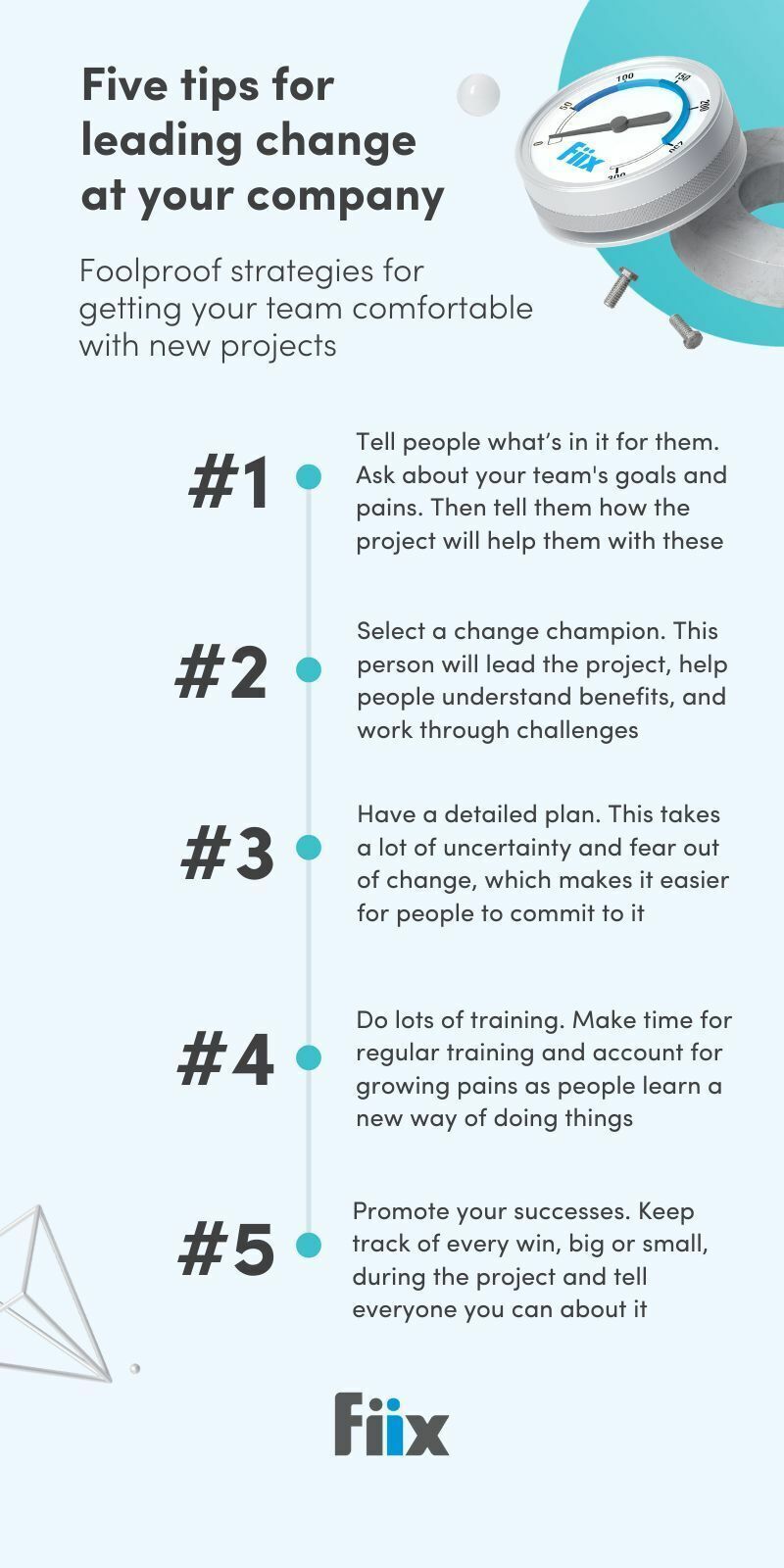Building a strong capacity for change is good ROI. The faster any change is adopted and the more resistance is managed, the closer you are to your desired outcome. So how do you get started?
- The first step is always to communicate the change to create awareness for WHY it is happening and to start to build desire to participate in the change. Tell people what’s in it for them. Ask about the team goals and pains. Tell them how the project will help them. Poor communication is often cited as a major reason for change failure. The earlier you can talk with every impacted group, the stronger the likelihood you will prevent rumours. You don’t need to have all the Project Management details ironed out before you left everyone know that change is coming.
- Select change champions. This person will lead the project, help people understand benefits, and work through challenges. Your change champions should be mapped out, so every group is tied to someone who will communicate and be an active and visible presence. Remember that organizational messages are best heard from an executive sponsor, while personal details such as how the shifts will be affected or how compensation might change, is best sent through a trusted shift supervisor or team leader.
- Have a detailed plan. This takes a lot of uncertainty and fear out of change, which makes it easier for people to commit. Your change needs a strong project manager as well as a change manager. Don’t be afraid to consult impacted groups on details of the plan and create a feedback loop.
- Do lots of training. Make time for regular training and account for growing pains as people learn a new way of doing things. People also learn in different ways, so be agile and creative. Use as many options as possible between instruction, on the job training and media content like videos, just don’t forget the paper copies too! Adoption curves, especially for technology skills, show us that we always have early adopters and laggards, but the majority of the group will learn on time. Reward the early adopters and be ready to repeat training for the laggards.
- Promote your successes. Keep track of every win, big or small, during the project and tell everyone you can about it. Recognize that change is hard and that any momentum forward is a success towards those desired outcomes.
Change Management can help you increase your probability for project success, manage employee resistance, capture people dependant ROI and build competency into your organization. If you need help scoping your organizational readiness for change, or creating a change management plan, let us know.










